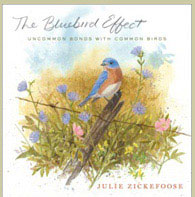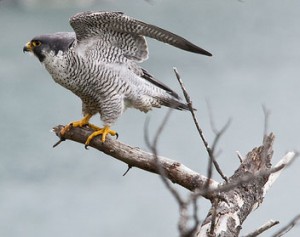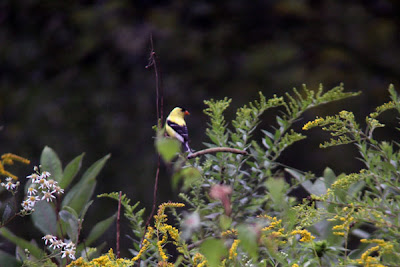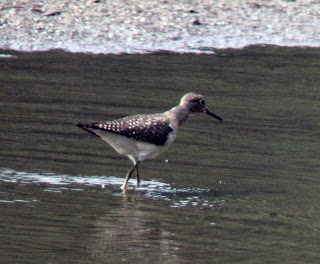I have been reading Julie Zickfoose’s fine book, The Bluebird Effect. It’s a series of stories abou t bird rehabilitation and observation and is the kind of book that is nice to take your time reading. I have it on the iPad and read a chapter or two a week. Her chapter “Love and Death among the Cranes” brought back some memories from last year and raised some issues on hunting and birding.
t bird rehabilitation and observation and is the kind of book that is nice to take your time reading. I have it on the iPad and read a chapter or two a week. Her chapter “Love and Death among the Cranes” brought back some memories from last year and raised some issues on hunting and birding.
Last year, we travelled to the Southwest with our Airstream trailer. We were planning to come down I-81 and when I heard of a rare Hooded Crane hanging out with the Sandhill Cranes at the Hiwassee Wildlife Refuge in Tennessee. I blogged about it — we saw hundreds of cranes and a Ross’s Goose but the Hooded Crane was not around while we were there. What I did see was Sandhill Cranes in fields everywhere and learned that Tennessee was considering opening up a hunting season for them. (They delayed the decision for a couple of years.)
Julie writes passionately about the controversy in her book and on her blog. I’m not anti-hunting but do have issues with the shooting of majestic birds like Sandhill Cranes and Snow Geese. And now, our local little pond, a quiet water supply for Vermont’s capitol city, is not only now opened for non-motorized boating but also probably duck and geese hunting. Hundreds of birders are angry, worried, depressed, feeling helpless, or all of the above. It makes me wonder why I have a duck stamp on my binoculars.

The storyline goes like this: Birders and other frequenters of National Wildlife Refuges should purchase a $15 Federal Duck Stamp each year in order to gain free admission to refuges. Conservationists buy Federal Duck Stamps because they know that the stamps are, dollar for dollar, one of the best investments one can make in the future of America’s wetlands. For every dollar you spend on Federal Duck Stamps, ninety-eight cents goes directly to purchase vital habitat for protection in the National Wildlife Refuge System.
So, every year, I buy a duck stamp at the Parker River National Wildlife Refuge (even though I have a life-long Senior Pass) and put it prominently on my binoculars. The word is that the majority of stamps are bought by non-hunters but even if that is the case, we get little or no credit in surveys.
Here’s how blogger Mike puts it: When the U.S. Fish and Wildlife Service puts together the National Survey, it ascribes zero dollars of Duck Stamp purchases to wildlife watchers. Zero. If you can find the statement in the National Survey that acknowledges that some of the Duck Stamp money comes from wildlife watchers, I’ll eat my beloved Midwest Birding Symposium hat (or more likely just some wild duck.) But that’s not going to happen.
So, when I go to Parker River or over to Lake Champlain and hear the guns booming just outside the refuges, I’ll try to remember that money from licenses, shells, stamps, etc goes toward habitat and that hunters love birds as much as we do — with a nice bottle of wine on the side.
 When asked to name the fastest animal on earth, many people will respond “cheetah.” But it is the peregrine falcon – a cliff-dwelling raptor –that holds that title with the ability to reach speeds of 200+ MPH as they stoop (dive) in flight. (The cheetah tops out at a mere 70 MPH).
When asked to name the fastest animal on earth, many people will respond “cheetah.” But it is the peregrine falcon – a cliff-dwelling raptor –that holds that title with the ability to reach speeds of 200+ MPH as they stoop (dive) in flight. (The cheetah tops out at a mere 70 MPH). When asked to name the fastest animal on earth, many people will respond “cheetah.” But it is the peregrine falcon – a cliff-dwelling raptor –that holds that title with the ability to reach speeds of 200+ MPH as they stoop (dive) in flight. (The cheetah tops out at a mere 70 MPH).
When asked to name the fastest animal on earth, many people will respond “cheetah.” But it is the peregrine falcon – a cliff-dwelling raptor –that holds that title with the ability to reach speeds of 200+ MPH as they stoop (dive) in flight. (The cheetah tops out at a mere 70 MPH).
























